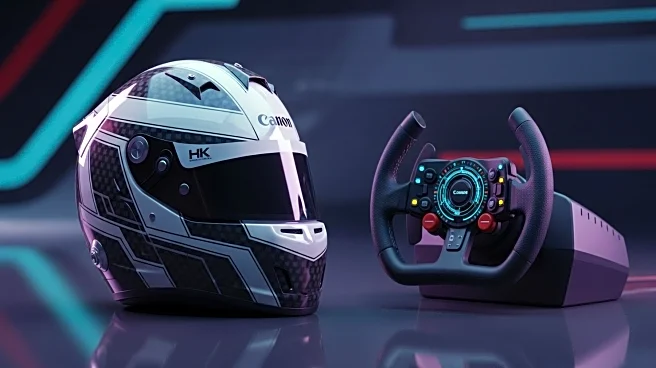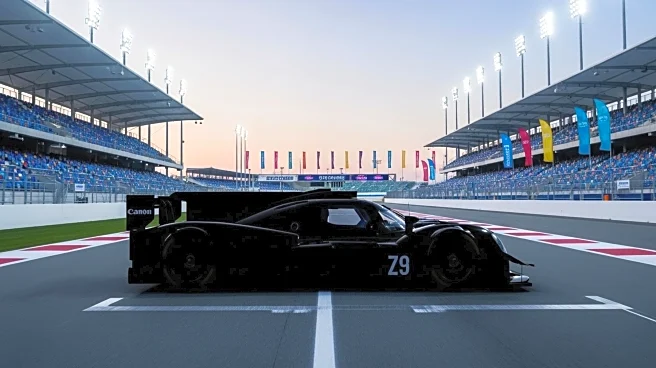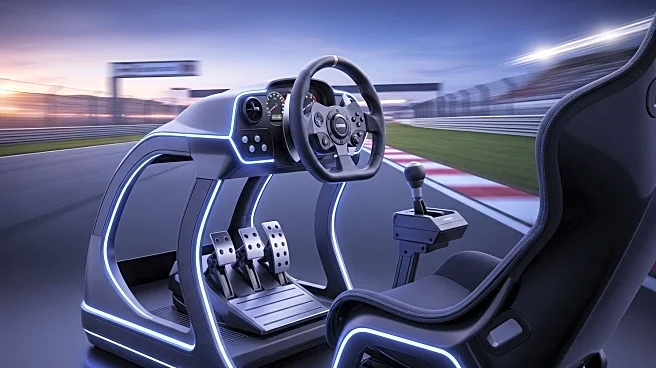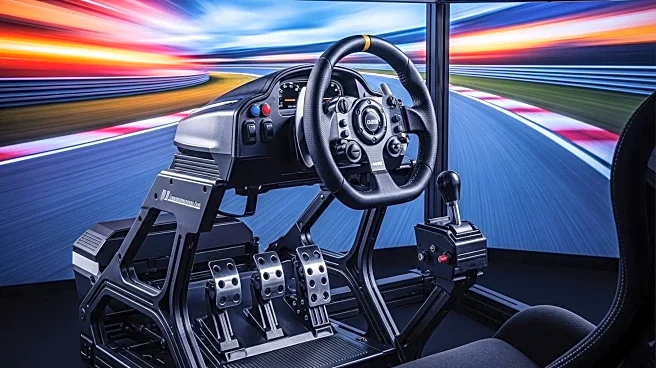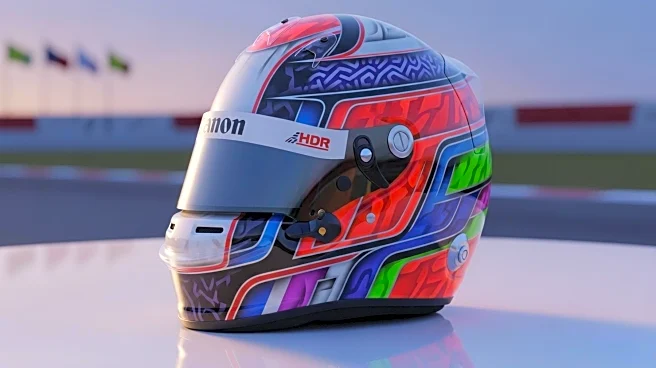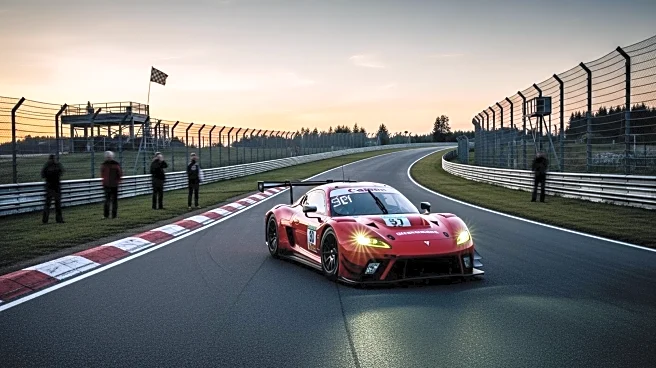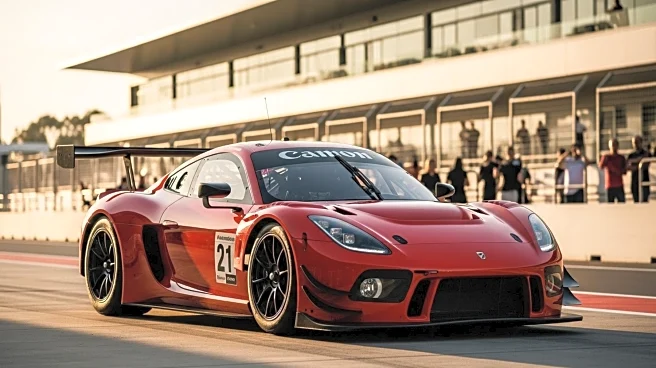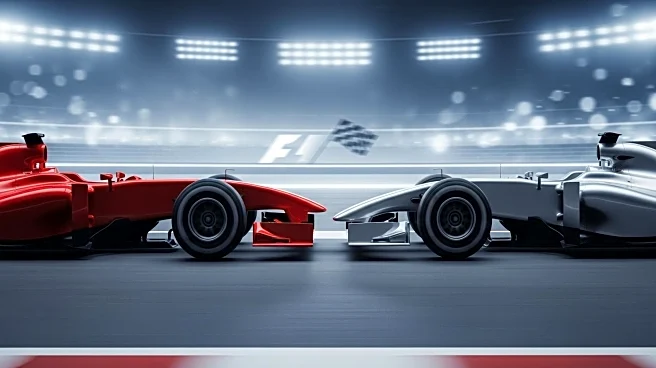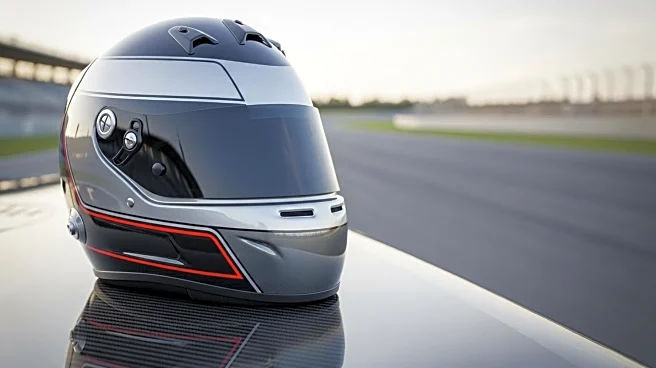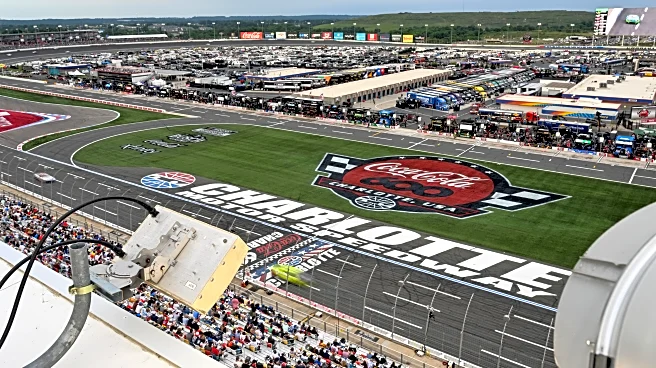What's Happening?
A five-year-old sim racer named Emerson has captured attention with his impressive performance in a virtual NASCAR Truck Series race at Daytona. The young racer, guided by his father, managed to finish eighth, showcasing remarkable skill and focus. This event highlights the growing influence of sim racing in the motorsport world. Notably, sim racing is becoming a crucial training ground for aspiring professional drivers. Misha Charoudin, a Nürburgring content creator, emphasized the importance of sim racing, citing Max Verstappen's success in GT3 racing as evidence of its impact. Charoudin predicts that sim racing will become a mandatory step for those aiming to enter professional racing, as it offers a cost-effective and accessible alternative to traditional karting and track programs.
Why It's Important?
The rise of sim racing as a legitimate training tool for professional motorsport has significant implications for the industry. It democratizes access to racing by reducing the financial barriers associated with traditional racing paths, such as karting, which can cost aspiring drivers substantial amounts annually. By providing a platform where skills can be honed without the high costs of physical racing, sim racing opens opportunities for a broader range of participants. This shift could lead to a more diverse pool of talent entering professional racing, potentially altering the landscape of motorsport. Additionally, the acceptance of sim racing as a serious training method could drive technological advancements in simulation software and hardware, further enhancing its realism and effectiveness.
What's Next?
As sim racing continues to gain recognition, it is likely that more racing teams and organizations will integrate it into their training and scouting processes. This could lead to the development of standardized sim racing programs and competitions that serve as stepping stones to professional racing careers. Additionally, the motorsport industry may see increased investment in sim racing technology, improving the quality and accessibility of simulators. Stakeholders, including racing teams, sponsors, and technology companies, may collaborate to create pathways for sim racers to transition into real-world racing, further blurring the lines between virtual and physical motorsport.
Beyond the Headlines
The growing acceptance of sim racing as a training tool raises questions about the future of traditional racing pathways. As sim racing becomes more prevalent, there may be a cultural shift within the motorsport community, challenging long-held perceptions about what it takes to become a professional driver. This evolution could also influence the way racing is marketed and consumed, with virtual races potentially gaining more prominence alongside traditional events. Furthermore, the environmental benefits of sim racing, such as reduced carbon emissions from travel and track usage, could align with broader sustainability goals within the industry.

